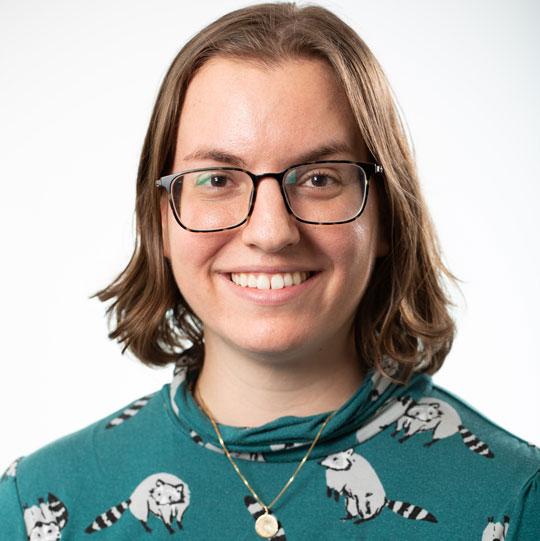
Dr. Catherine Zucker
Credit: CfA
A scientist from the Center for Astrophysics | Harvard & Smithsonian (CfA) has been selected for a top award from the National Science Foundation (NSF) for early career researchers.
Catherine Zucker is an astrophysicist at the Smithsonian Astrophysical Observatory (SAO), which is part of the CfA. The Faculty Early Career Development (CAREER) Program offers the NSF's most prestigious awards in support of early-career faculty who have the potential to serve as academic role models in research and education and to lead advances in the mission of their department or organization.
“It is an honor to be selected for a CAREER award, and I look forward to the opportunity to grow my research and outreach programs with NSF support over the next five years,” said Catherine Zucker.
Dr. Zucker received her undergraduate degree in astrophysics from the University of Virginia and Master’s and Ph.D. in astronomy from Harvard University. Before joining the SAO in 2023, she spent two years as a Hubble Fellow at the Space Telescope Science Institute.
“This is a wonderful achievement and a testament to everything Catherine has already achieved in her career,” said Lisa Kewley, Director of the CfA. “We are very excited to see Dr Zucker’s timely and exciting CAREER research program come to fruition.”
Dr. Zucker’s research interests span star formation, interstellar gas, young stars, and the structure and dynamics of the Milky Way. She leverages large surveys of the sky in combination with new data science and data visualization techniques to map our home galaxy, with the goal of better understanding the link between star formation and the broader galactic environment.
The research program led by Dr. Zucker will study the life cycle of our galaxy’s normal matter, i.e., visible matter rather than invisible dark matter. This cycle has been well studied in nearby galaxies, but our knowledge of the cycling of material in our galaxy is less well understood. The team will produce a new 3D model of interstellar gas and young stars within 4000 light-years of our solar system in order to constrain the physical processes that shape their formation and ultimate fates.
In addition to her research, Dr. Zucker is also heavily involved with public engagement. Among other projects, she will be designing an online learning module paired with telescopes that will be delivered to rural schools as part of the upcoming SAO Scientists Taking Astronomy to Rural Schools (STARS) program. This module will allow students across the United States to link their view of dark skies with the team’s new 3D model of our galactic backyard.
About the Center for Astrophysics | Harvard & Smithsonian
The Center for Astrophysics | Harvard & Smithsonian is a collaboration between Harvard and the Smithsonian designed to ask—and ultimately answer—humanity's greatest unresolved questions about the nature of the universe. The Center for Astrophysics is headquartered in Cambridge, MA, with research facilities across the U.S. and around the world.